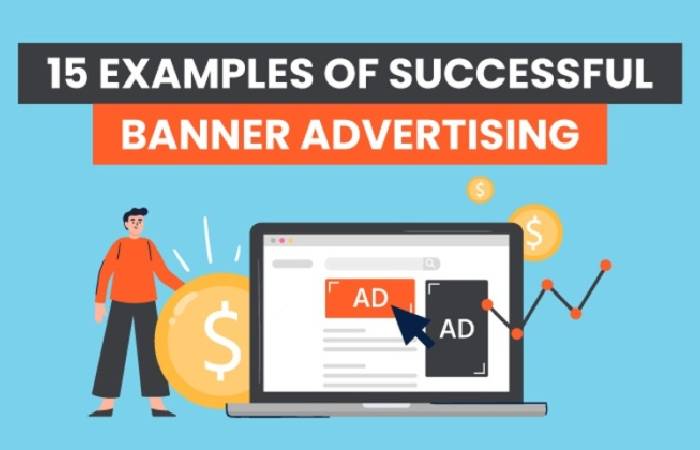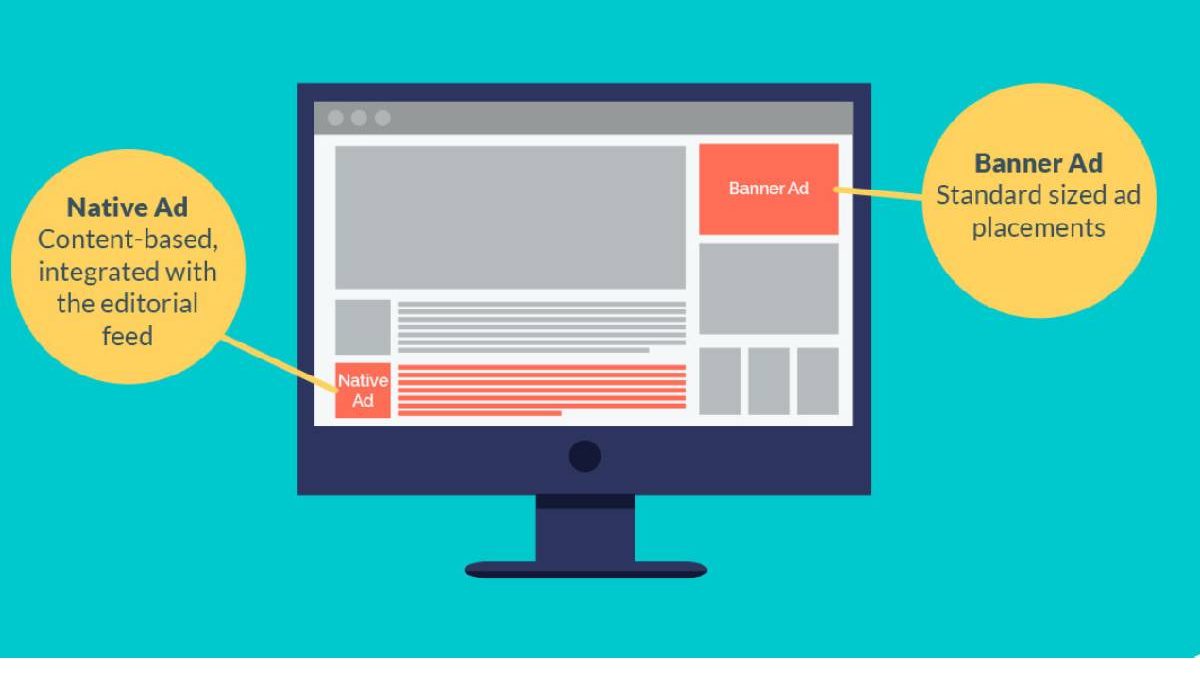Native Ads vs Banner Ads – Nowadays, trades have many selections when it originates to digital advertising, as various online advertisements help attract an audience cost-effectively. Two of the most widespread and frequently selected options are banner and native ads.
Banner ad operations have been around since the beginning of online advertising and are still in high demand. However, when native ads seemed, they took a significant market share and now occupy their part of the position.
One of the most mutual questions here are the benefits and drawbacks of native ads vs banner ads, besides which ad operation to select to attain the best results for your business. Let’s dive in to find the answer.
Table of Contents
What are Banner Ads?

You have seen many banner ads while visiting different web resources. These banners, also named display ads, frequently seem at the highest of a webpage or are positioned across the website next to the main content.
Display advertisements have varied sizes and formats. They can be deliberate as static banners with text and images. They may comprise audio, video, or animation content to capture the target audience’s attention and relate to potential clients. The only thing that never variates is that they always contain a link to the advertiser’s webpage, where you can acquire more about the product and buy something.
Kinds of Banner Ads
Banner ads vary, rendering different targeting options and their primary role. Let’s evaluate the most common types of display advertising.
- Remarketing Ads: They are also known as retargeting ads. It is modified marketing when a banner suggests something a visitor was previously interested in.
- Placement-Targeted Ads: In this case, the advertiser can have the choice to place his ad (websites or particular webpages) at the time where the ads are shown.
- Interest-Based Ads: This type of ad is open to people who have confirmed an intense interest in products that match the advertiser’s business.
- Contextually Targeted Ads: They are related to the website’s content
You can see numerous instances of banner ads. The first one is a static ad shown on a website for parents. We can see that the ad shows a kid-related covenant to the lead leading site’s theme.
Benefits and Drawbacks of Banner Ads
Benefits:
To choose the right advertising strategy, we need to define the primary rewards and drawbacks of display advertising for your business. So the pros will be the next:
- Easy to Set Up. It’s not hard to enterprise and place banners as they can remain sized to fit the ad space and don’t require complicated integration with publishers’ websites.
- Attract Attention. With the help of high-quality images, animations, 360-degree videos, and communicating elements, these ads capture a potential customer’s consideration, even if the person is scrolling the page and doesn’t recite the writing content.
- Rise Brand Alertness. Distinct native and display ads contain a brand logo and stay considered in corporate colours, benefiting people who know and remember the brand.
- Price Flexibility: It is likely to regulate the campaign conferring to your budget. You can start with a comparatively small budget and increase it when the business grows.
These ads also have their deceptions:
- Lesser Visibility. As today’s world is full of diverse proposals, customers are used to viewing many online ads, which has led to people disregarding advertisements (banner sightlessness).
- Short Banner Ad Click-through Rates. Related to other forms of online marketing, click-through rates for banner ads are lesser, which outcomes in a more down change. Across all set-ups and settlements, the average CTR for show ads in May 2020 was just 0.05%.
- Ad Hindering. People who see many ads daily get irritated by irregular text and pop-ups, which block the content. Thus they install ad-blocking software to evade seeing commercials.
What is Native Advertising?
The straightforward definition of native marketing is that this kind of online ad matches the look, feel, and role of the platform on which they appear. Thus, unlike banner ads that stand out from the unique website content, native ads unite with the editorial content and look like a share of the site.
If we compare banner advertisements vs native advertisements, native advertising is a comparatively new format for endorsing goods, but its fame is continuously growing. Many dealers have previously tried native ads and believed out where native ads are operative and how to use them. Conferring to this resource, by the finish of 2020, advertisers will devote almost two-thirds of show budgets to native ads.
Another interesting fact is that native ads have constantly been developing and changing. Modern online ads seem diverse, comprising sponsored articles, in-built videos, or widgets with suggested products that look like the platform’s editorial content. Thus, with content promotion, native ads have become a solid tool to appeal to an audience and promote products.
Types of Native Ads
To know how native ads can fit in through the original website’s content, let’s analyse numerous commonly used native advertising formats.
In-Feed Components: They endorse funded content and are open along with original books in the newscast feed of social networks or websites. A publisher and a sponsoring advertiser usually develop them.
Benefits and Drawbacks of Native Ads
Benefits:
The fame of native ads is rising as they can help increase your business marketing plan. The main pros of this type of numerical ad are the following:
- Easy Targeting: With the comprehensive aiming options available, reaching people concerned about a particular product with related content is easy. With Rontar’s Native Advertising, you can narrow your audience to attract high-intent traffic.
- High Perception. Unlike banner ads that visitors typically ignore, native ads do not appear like old-style ads and, thus, receive greater customer attention. Conferring to a study, website companies looked at native ads 53% more often than display ads.
- Credibility. Content co-created by the producer rather than just the advertiser advances consumer trust.
- High CTR. Higher perception and credibility lead to higher engagement with native ads, which results in many ticks. Native commercial CTR can be 8,8 times more advanced than regular exhibition ad CTR.
- Higher effectiveness. As consumers do not have the tools to block this ad type, the possibility of reaching beset visitors increases.
Drawbacks:
- Reader Misunderstanding: Operators occasionally do not understand that they are reading sponsored content. It could consequence in a negative awareness of the product as an alternative.
- High Cost: Native ads can be more costly than, for instance, retargeting ads or other kinds of digital promotion. Irrespective, money spent on native advertising with the proper targeting settings will provide good results.
Conclusion
Native Ads vs Banner Ads – Both display and native ads have pros and cons, but with the right plan, they will positively affect your business. You want to describe which method of advertising better suits your present needs. If you wish to raise brand alertness or have a relatively partial budget to begin your ad campaign, you could use banner ads. But to fascinate more targeted traffic, you should choose native advertising.


